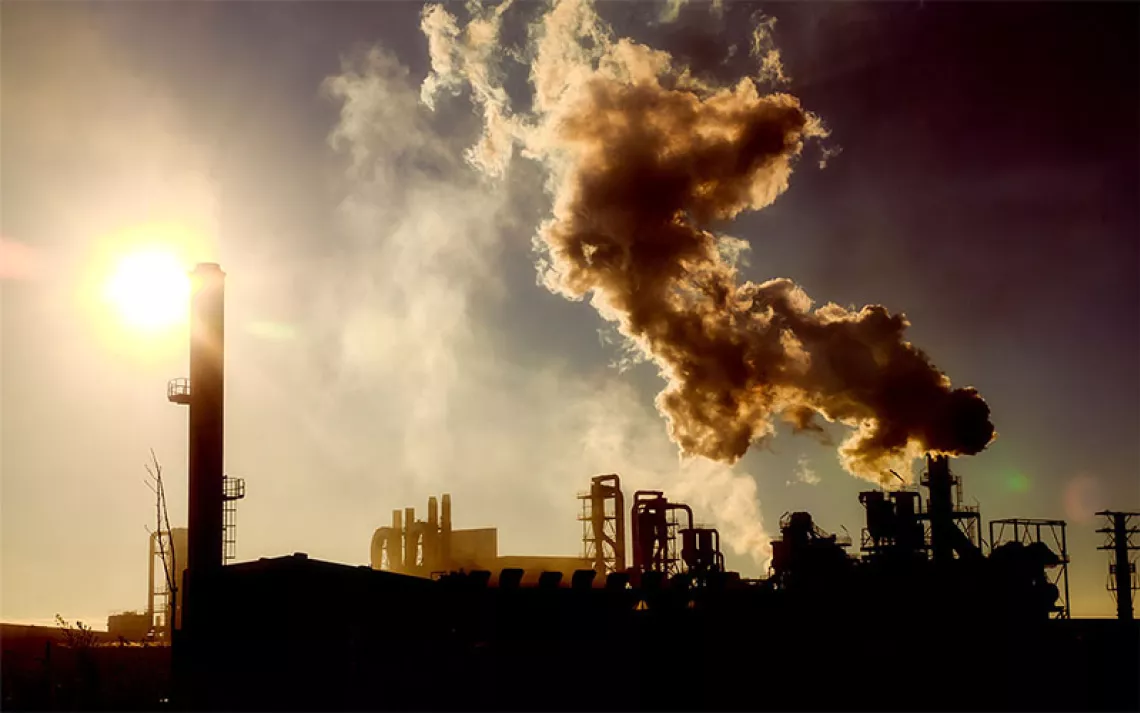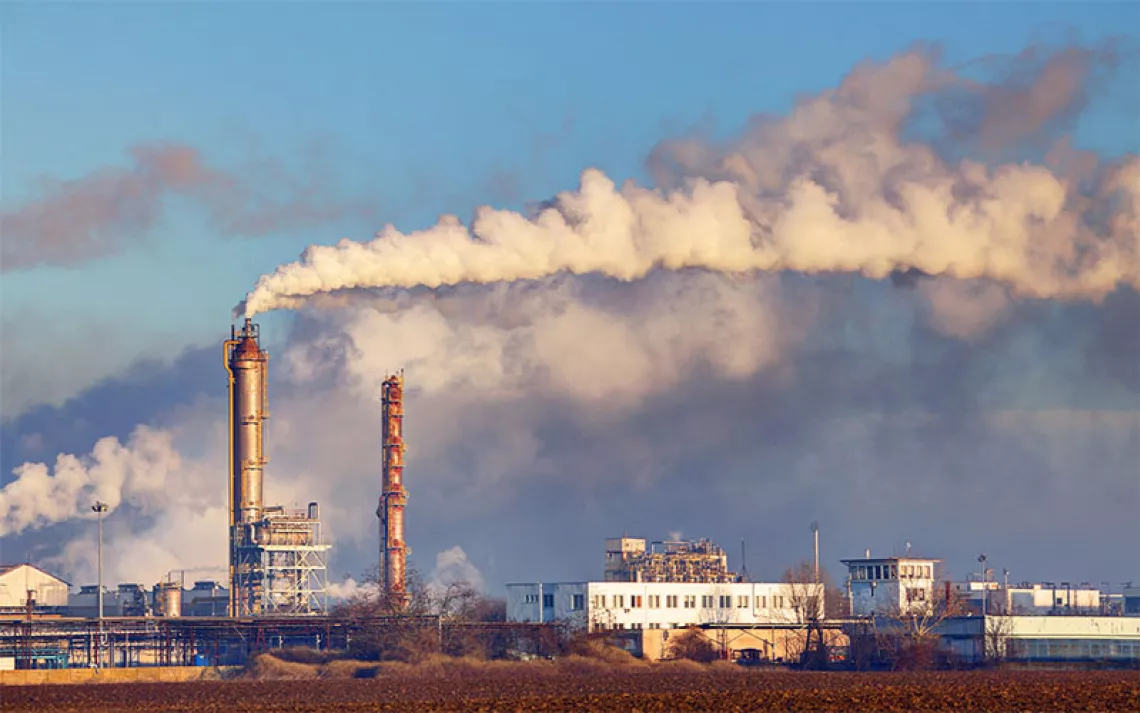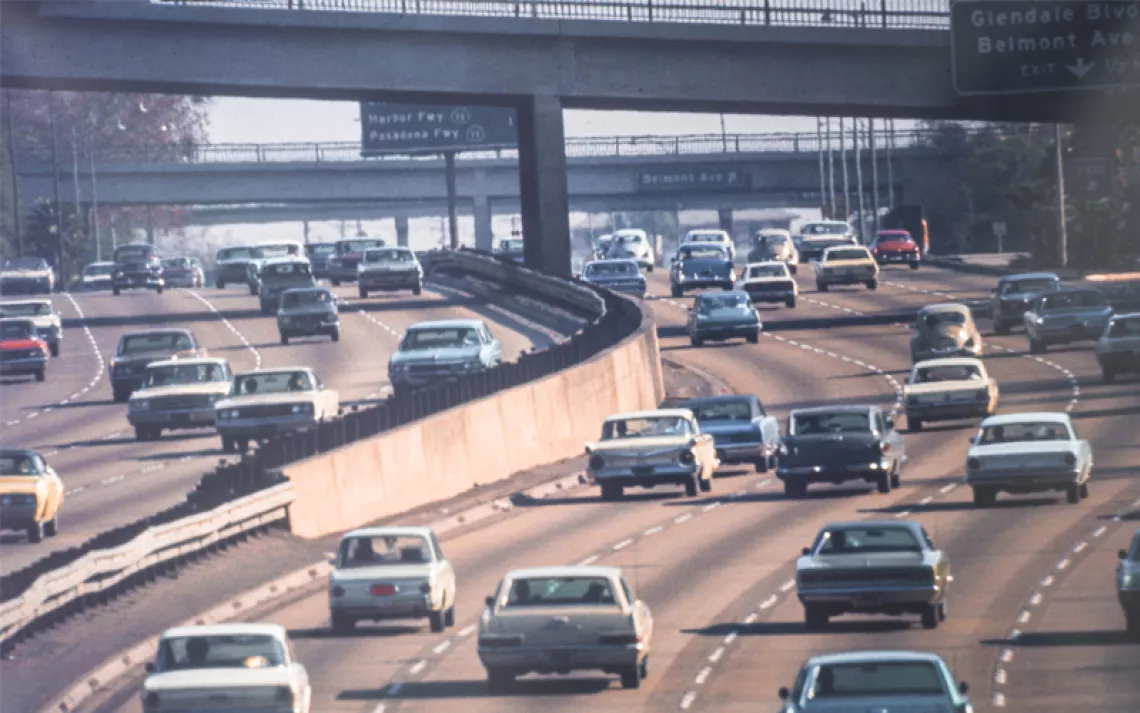China’s Pollution Paradox
Researchers estimate migration from rural villages to cities saved 36,000 lives

Ambient air pollution in a village in Enshi, China | Photo Courtesy of Dr. Shu Tao
Smog is now so common in urban China that even pets have pollution-blocking face masks. But according to a new paper, as bad as this urban smog may be, the overall air quality of the country is better than it would have been had many rural Chinese stayed in the countryside and never migrated to the city at all.
The study, published yesterday in Science Advances by Huizhong Shen and colleagues at Peking University in China, estimates that rural-urban migration between 1980 and 2010 reduced the national average particulate-matter exposure by almost four micrograms per cubic meter, relative to a world where that migration never happened. For a country in which air pollution causes something on the order of 1 million premature deaths annually, this seemingly minor difference carries weight: The authors estimate that by leaving their home villages and moving to cities, China’s new urbanites saved 36,000 lives annually.
The authors attribute most of this effect to a change in how city dwellers cook and move around. Yes, as people migrate out of the countryside, the overall quantity of emissions tend to increase as cities grow. The number of people exposed to polluted urban air also rises accordingly.
But at the same time, something else happens. Each individual migrant often produces less pollution, because city life gives them the chance to switch away from fuels like firewood, which emits mountains of air pollutants, to electricity powered by natural gas and other cleaner forms of energy. (By some measures, even burning coal is cleaner than burning biomass.) Per-capita pollution caused by burning wood and charcoal decreased in urban areas between 1980 and 2012, but remained almost constant in rural areas.
In the study, the authors compare population distributions in China and their energy use in different areas—at different points in time—to a fictional alternate reality in which the rural-urban migrants kept using energy the way they had in the countryside. In this way, the researchers could, in theory, isolate the effects of migration. Indeed, to investigate migrants’ personal impacts on emissions, they only looked at residential and transportation uses of fuel: activities like cooking, heating, and lighting, as well as fuel consumption from vehicle use.
Some researchers are skeptical of this approach. “What they’re getting at with this counterfactual is that things would have gotten worse had this migration not occurred,” said Michael Brauer, a professor at the University of British Columbia’s School of Population and Public Health. But in absolute air-pollution terms, he says, “concentrations have not gone down; they’ve gone up.” That is, to be clear, measurements of the real-world air in China show that pollution has generally gotten worse since 1980, partly because of a lot of other factors affecting air quality outside of the scope of Shen’s study, like steel mills and cement plants.
The authors’ reason for avoiding industrial pollution is that quantifying how migration relates to it would be hugely complicated: There’s just no good model linking the two phenomena. The analysis, then, is restricted to the question of which energy sources people use directly as individuals.
Julian Marshall, a professor of civil and environmental engineering at the University of Washington, also has reservations about the study’s attempt to connect rural-urban migration and air quality exposure to particulate matter. “If you say there’s a one-to-one causal relationship there, that’s problematic,” he says, adding that plenty of people in urban areas in China still use firewood and charcoal, even if there’s less access to free wood in the city than there might be in the countryside.
In rural areas that are cold for as much as half the year, “the need for space heating is high, but replacements for coal and biomass are just not available,” wrote Colorado State University environmental engineer Ellison Carter in an email. As the study shows, while per-capita solid fuel use decreased in urban areas between 1980 and 2012, it remained almost constant in rural areas. In many rural Chinese settings, too, “clean energy alternatives aren't yet viable, especially for heating,” Carter wrote. As the study puts it, “Encouraging the transition from coal and biomass to other energy sources is the biggest challenge in promoting clean energy in rural China.”
The air quality of China’s cities is likely to improve, much as the air of London, Los Angeles, and Pittsburgh did before it. Compared to U.S. regulations, China’s emissions standards from coal plants are generally stricter, and its new coal plants are cleaner than anything burning coal in the United States. The quantity of coal purchased by China is also nosediving. There may yet be one day when air pollution in the country is so low that migration will affect air quality vividly enough to show up in recorded, rather than just theoretical, papers.
 The Magazine of The Sierra Club
The Magazine of The Sierra Club







